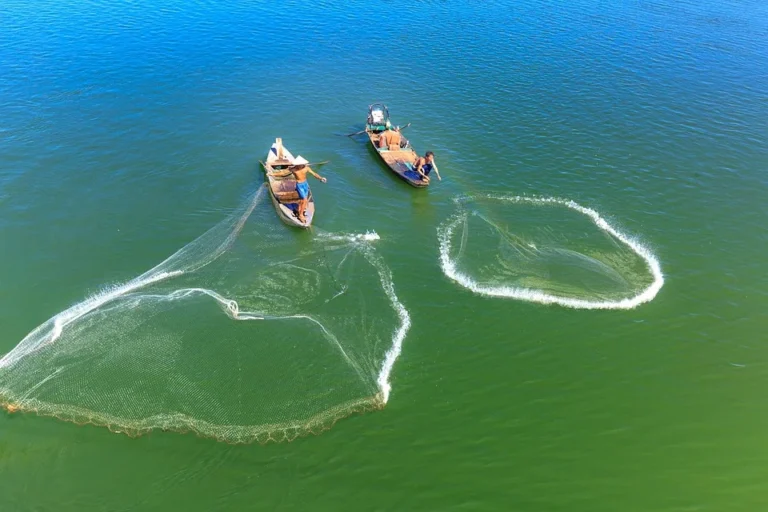We all hear the term “global warming” all the time. Over recent months, I’ve started reading travel stories about how Mount Kilimanjaro’s permanent ice cap is melting, how alpine ski resorts will permanently close due to less snow, how Arctic glaciers are melting, how more frequent and severe weather disturbances are disrupting tourism, etc. Some of these stories even urge us to go now before some of these scenic places are transformed or gone forever. Climate change is now an issue of concern to global travelers.
Travel, of course, has environmental consequences. Long-distance travel involves the production of carbon dioxide and other greenhouse gases, and airplanes are some of the most intense polluters in existence today. In addition, wherever we go, we consume food and other services, and produce waste. So what do we do?
In terms of aircraft emissions, there are actually some concrete things we can do. There are ways to offset greenhouse gas emissions from air travel by purchasing trees that will be planted to offset these emissions. At Trees for the Future, $40 will actually pay for the cost of planting 400 trees that will help offset greenhouse gases. You will also receive a Global Refrigeration Certificate and a bumper sticker. On their website you’ll also see a list of partners, including lodges and bed and breakfasts powered by renewables.
The Rainforest Alliance already offers a variety of information for environmentally conscious travelers. It also provides a sustainable tourism certificate for tourism enterprises that rely on methods to reduce the consumption of water, energy and other resources, and to improve the management, treatment and disposal of waste. They even offer a toolkit of sustainable tourism best practices available to small and medium enterprises in the tourism industry.
On their website, the Rainforest Alliance also advocates for a number of simple, eco-friendly behaviors we can all try to follow:
o Supporting local economies by seeking locally owned accommodations and dining, locally grown foods and locally manufactured products and crafts.
o Sponsorship of green hotels whose managers have programs that save water and energy.
o Stay on hiking trails. Clean up your mess and dispose of waste properly. Keep a distance from wildlife.
o Travel by mass transit as much as possible.
o Avoid vehicles with two-stroke engines such as jet skis, scooters and some boats that cause significant pollution.
o Be culturally sensitive to local customs, greetings, dress codes and food habits.
o Treat others with the same respect you would demand in your community.
Other environmental certification programs for tourism operators and advice for environmentally conscious consumers include the following websites:
– Choose Terra
Green Globe 21
Environmental choice
Green seal
Global Environmental Labeling Network
Climate Neutrality Network
Another interesting site is Future Forests: it advocates a “carbon neutral” lifestyle, in order to neutralize our impact on the environment. Future Forests has been proving people a variety of environmental gifts since 1997. You can customize a tree, for example, for $10.00. You can even plan carbon-neutral weddings with Future Forests.
One of the cool things about their website is that they offer a really cool carbon emissions calculator that allows you to calculate projected flying or driving emissions. I thought to check it out, so I put in some supposed data for a flight from New York City to London, England.
I immediately found out that this flight would produce 1.22 tons of carbon dioxide. The calculator also tells me if I set aside two trees I can make this ride carbon neutral. Instead, I will be able to provide two energy-saving light bulbs to a small community in the developing world. Both options will be £30. I also checked their carbon footprint calculator. If I traveled 400 km (250 miles) each week in a car with a 1.4-2 liter engine, I would produce 4 tons of carbon dioxide per year, which would take 5 trees to replace.
In addition to planting trees, you can also buy “carbon offsets”. Carbon offset is actually an investment in a project or business with the aim of eliminating greenhouse gas emissions. Offset projects come in many varieties and may include tree planting, reforestation, building repairs (i.e. installing more efficient heating/cooling systems), or wind power projects.
According to the Better World Club website, this is how it works: You book a flight through Better World Travel – members and receive a free carbon offset for their domestic flight in the US ($11 value). If you book a flight online, another travel agency, or airline, send them a tax-deductible donation to offset the CO2 emissions from your trip. ($11 for domestic flights or $22 for international flights.)
So the good news is that there are actually ways to offset the environmental impact we all have, even while traveling.



